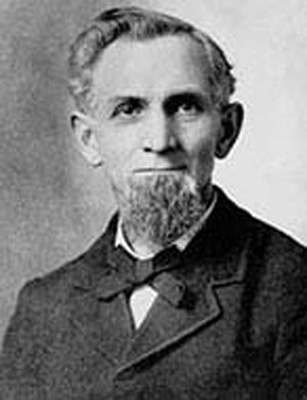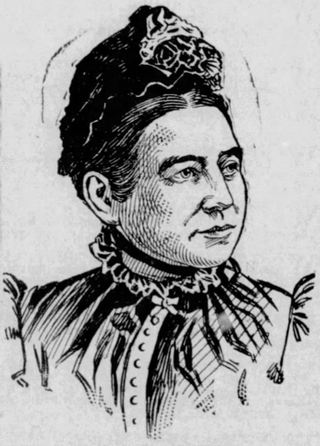
An invention is a unique or novel device, method, composition, idea or process. An invention may be an improvement upon a machine, product, or process for increasing efficiency or lowering cost. It may also be an entirely new concept. If an idea is unique enough either as a stand-alone invention or as a significant improvement over the work of others, it can be patented. A patent, if granted, gives the inventor a proprietary interest in the patent over a specific period of time, which can be licensed for financial gain.

A vacuum cleaner, also known simply as a vacuum, or a hoover, is a device that uses suction in order to remove dirt and other substances from floors, upholstery, draperies, and other surfaces. It is generally electrically driven.

Emile Berliner originally Emil Berliner, was a German-American inventor. He is best known for inventing the lateral-cut flat disc record used with a gramophone. He founded the United States Gramophone Company in 1894; The Gramophone Company in London, England, in 1897; Deutsche Grammophon in Hanover, Germany, in 1898; and Berliner Gram-o-phone Company of Canada in Montreal in 1899. Berliner also invented what was probably the first radial aircraft engine (1908), a helicopter (1919), and acoustical tiles (1920s).

Margaret Eloise Knight was an American inventor, notably of a machine to produce flat-bottomed paper bags. She has been called "the most famous 19th-century woman inventor". She founded the Eastern Paper Bag Company in 1870, creating paper bags for groceries similar in form to the ones that would be used in later generations. Knight received dozens of patents in different fields and became a symbol for women's empowerment.

The Einstein–Szilard or Einstein refrigerator is an absorption refrigerator which has no moving parts, operates at constant pressure, and requires only a heat source to operate. It was jointly invented in 1926 by Albert Einstein and his former student Leó Szilárd, who patented it in the U.S. on November 11, 1930. The three working fluids in this design are water, ammonia, and butane. The Einstein refrigerator is a development of the original three-fluid patent by the Swedish inventors Baltzar von Platen and Carl Munters.

A street sweeper or street cleaner may refer to a person's occupation or to a machine that cleans streets.

Mary Elizabeth Anderson was an American real estate developer, rancher, viticulturist, and most notably the inventor of what became known as the windshield wiper. On November 10, 1903 Anderson was granted her first patent for an automatic car window cleaning device controlled from inside the car, called the windshield wiper. Her patent didn't get far as she got no manufacturing firms to agree to make her invention.

Lloyd Groff Copeman was an American inventor who devised the first electric stove and the flexible rubber ice cube tray, among other products. He had nearly 700 patents to his name, and he claimed that he could walk into any store and find one of his inventions.
Sarah Elisabeth Goode was an American entrepreneur and inventor. She was one of the first known African American women to receive a United States patent, which she received in 1885 for her cabinet bed.
Joy Mangano is an American inventor and entrepreneur known for inventions such as the self-wringing Miracle Mop. She was the president of Ingenious Designs, LLC, and appeared regularly on the U.S. television shopping channel HSN until her departure in late 2018. Mangano is the founder and CEO of Clean Boss, a company that develops and sells cleaning products.

James Murray Spangler was an American inventor, salesman, and janitor who invented the first commercially successful portable electric vacuum cleaner that revolutionized household carpet cleaning. His device was not the first vacuum cleaner, but it was the first that was practical for home use. It was the first to use both a cloth filter bag and cleaning attachments. Spangler improved this basic model and received a patent for it in 1908. He formed the Electric Suction Sweeper Company to manufacture his device. William H. Hoover was so impressed with the vacuum cleaner that he bought into Spangler's business and patents.

Sarah Guppy, née Beach was an English inventor and the first woman to patent a bridge, in 1811. She developed a range of other domestic and marine products.

A timeline of United States inventions (1890–1945) encompasses the ingenuity and innovative advancements of the United States within a historical context, dating from the Progressive Era to the end of World War II, which have been achieved by inventors who are either native-born or naturalized citizens of the United States. Copyright protection secures a person's right to his or her first-to-invent claim of the original invention in question, highlighted in Article I, Section 8, Clause 8 of the United States Constitution which gives the following enumerated power to the United States Congress:
To promote the Progress of Science and useful Arts, by securing for limited Times to Authors and Inventors the exclusive Right to their respective Writings and Discoveries.

Miriam Elizabeth Benjamin was an American schoolteacher and inventor. In 1888, she obtained a patent for the Gong and Signal Chair for Hotels, becoming the second African-American woman to receive a patent.

Sybilla Righton Masters was an American inventor. Masters was the first person residing in the American colonies to be given an English patent, and possibly the first known female machinery inventor in America of European ancestry. Masters was given a patent for a corn mill in 1715 in her husband's name, as women were not allowed to have their own patents. She also patented a process for making hats.
Lyda D. Newman was a hairdresser and inventor who was also an activist for women's suffrage. She held a patent for a novel durable hairbrush with synthetic bristles.

Maria E. Beasley was an American entrepreneur and inventor. Born in North Carolina, Beasley grew up with a strong interest in mechanical work and learned about the profession of barrel-making from her grandfather. Between 1878 and 1898, she patented fifteen inventions in the United States: these included a footwarmer, an improved life raft, and an anti-derailment device for trains; however, her primary success as an inventor rose from a specialty in barrel-making machines and processes. Beasley licensed a patent to the Standard Oil Company, exhibited her work at the World's Industrial and Cotton Centennial Exposition and the World's Columbian Exposition, and founded two companies for the design and manufacture of barrels.
Charles B. Brooks (1865–1908) was an American inventor. Born in Virginia in 1865, by the 1890s he was a resident of Newark, New Jersey. Besides inventing, Brooks was a porter for the Pullman Palace Car Company. Unlike other sweepers at that time (1890s), Brooks’ sweeper was the first self-propelled street sweeping truck. His design had revolving brushes attached to the front fender, and the brushes were interchangeable so that when snow fell, scrapers could be attached for snow removal. He received a patent for his invention on March 17, 1896. A few months later, on May 12, 1896, he patented a dust-proof collection bag for the street sweeper.

Alma Webster Hall Powell, also known as Alma Webster Powell or Alma Webster-Powell, was an American operatic soprano, suffragist, philanthropist, writer, film scenarist, inventor, and member of the Socialist Party.














